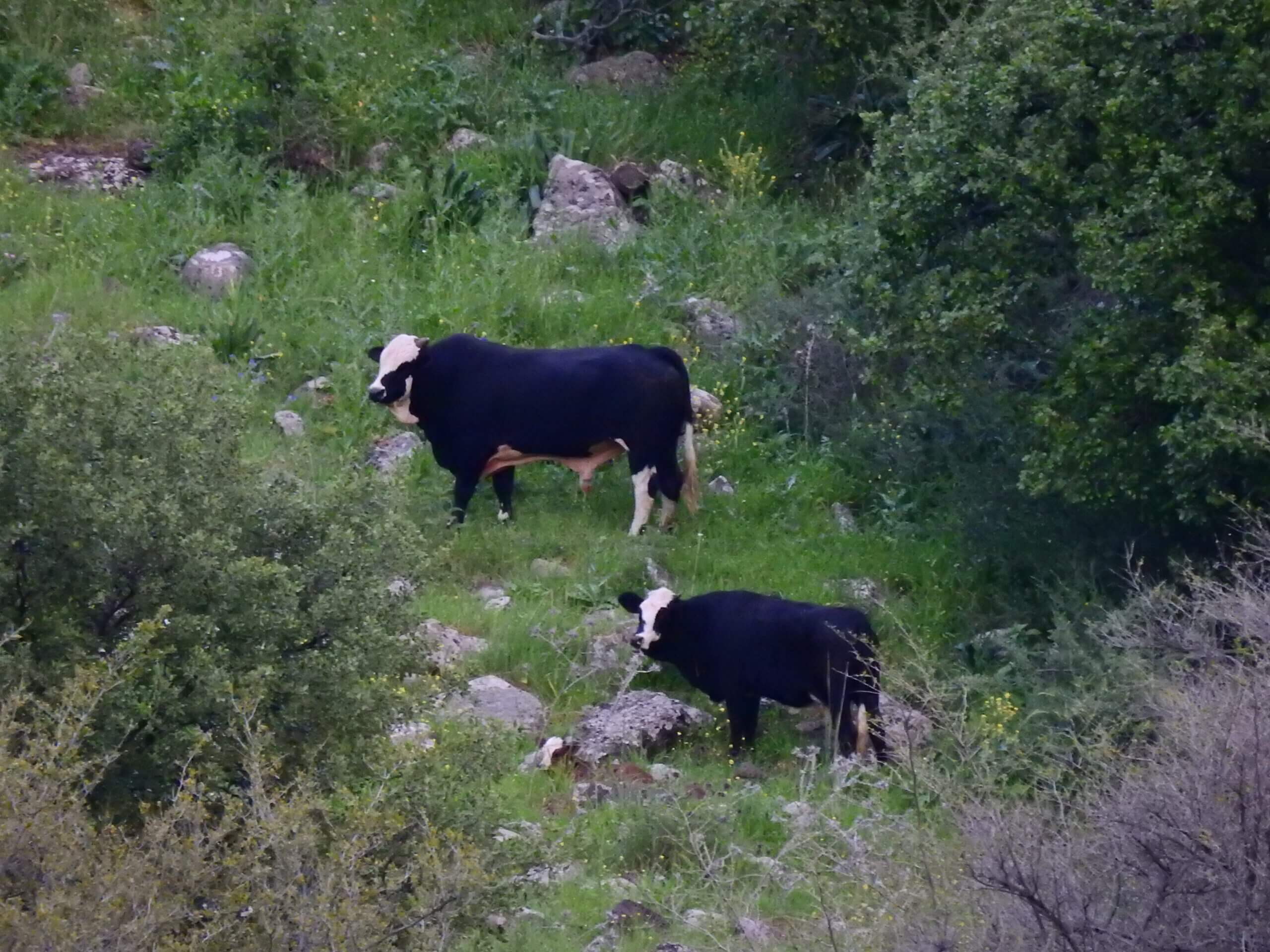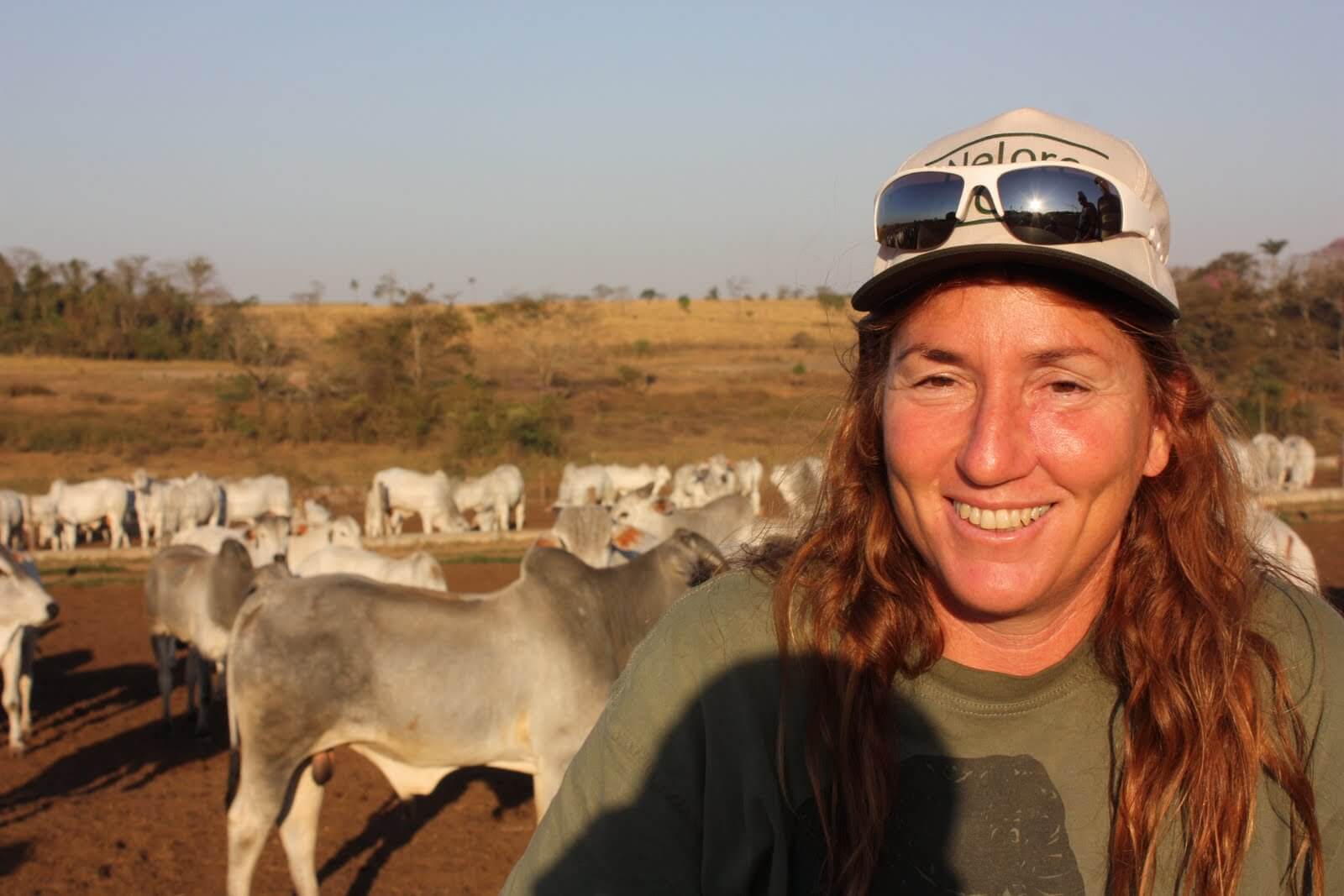A small and unique herd of free cows has been grazing in the Golan Heights since 1967. They have managed to survive wars, diseases and organized extermination operations. Now, the woman who has accompanied them for years hopes they will receive official protection from the state
Racheli Vox, Angle - Science and Environment News Agency
Anyone who walks in the afternoon between Nahal Meshushis and Nahal Ziztan in the Golan Heights, may see them: a herd of several dozen cows in a pasture. At first glance, one might think that this is an ordinary herd - mature cows and their small calves, brown, black and white, walking peacefully among the rocks and bushes, but unlike other cows that you can come across during a trip in the north, they do not belong to any farmer who raises them for the purpose of producing meat or milk for the use of the person These are cows that went wild
These cows are not owned by anyone. In fact, this is the only herd of free cows in Israel.
The origin of this wild herd (which has already been named the "Syrian cattle herd" or "the Baldi herd") is similar to that of many of the industrial cow herds that exist today in the Golan Heights. "The cows that remained in the Golan Heights during the Six Day War, and did not move to Syria along with the Syrian farmers to whom they belonged, formed the basis for the establishment of the Israeli cattle herd in the Golan," says Racheli Gabrieli, director of the beef cattle division at the Training and Vocational Service (SHM) at the Ministry of Agriculture. According to her, most of these cows were collected by Israeli breeders after 1967 - but not all. "There remained a nucleus of about 150 cows that was not collected - probably these were the more temperamental cows, the ones that were difficult to lead to the corral. They simply stayed in the area, and from then until today they have not been managed by humans."
survive well without man
"These cows actually behave like wild animals," says Gabrieli. "They gather their own food in the wild, give birth to their calves naturally, and do not receive any food supplements or veterinary treatments."
Cows that are raised in the meat and dairy industry are unable to get pregnant or produce enough milk to breastfeed without food supplements given to them by humans. The industrial cows are also required to receive vaccinations against diseases and treatment against ticks, designed to prevent tick fever - one of the main causes of morbidity and mortality in cows in Israel.
However, the wild cows survive well, give birth and nurse their calves even without any nutritional or veterinary support from humans. The reason for this is that in recent decades, the breeds of industrial cows in Israel have changed a lot: the females were mated with cows from abroad, so that the Israeli breeds gradually became more similar to European and American ones. The body of these cows can produce more meat and they produce a larger amount of milk, but they are not adapted to the local conditions in Israel, and therefore need a lot of supportive care. "In general, production is at odds with durability," explains Gabrieli. "The more we cultivate and improve production, whether it's meat, milk or fruit, the durability of the race or strain will be compromised."
The wild cows, on the other hand, have not undergone any cultivation since 1967, so they remain similar to the cows that lived in the area in those days: smaller and more adapted to the local conditions. "When we travel to third world countries, we usually can't drink the water there, but the locals can. In the same way, local animal breeds such as cows develop resistance by gradual exposure to disease over years and generations, and it works like a vaccine," says Gabrieli. "This is a breed that is maximally adapted to the environment in which it lives."
As part of this adaptation, the wild cows are slightly smaller than those belonging to the industrial herds. "Cows weigh a little less than 400 kilograms, while an average cow in the Israeli herd currently weighs about 600-550 kilograms," says Gabrieli. "It is true that even the cow we know is more mobile than people tend to think, but wild cows are much more athletic, they are able to run away like a missile and run on a slope like deer."

Do they cause diseases?
The relative compactness of cows also protects them from hunting threats. "In the past, there were illegal attempts to hunt them, but as cultivation progressed, their meat lost a lot of its value - this is very lean meat that has no monetary value," says Gabrieli.
However, other factors have significantly harmed the herd over the years, and even threatened its continued existence. "In the 90s, it was decided in the veterinary services that the herd was a source of diseases, and an order was issued to destroy it," Gabrieli says. "Out of 150 cows living in the herd at the time, 70 were shot. The killing only stopped when Dr. Doron Tiomkin, who was then the farmer's veterinarian (a cooperative of veterinarians that serves most of the dairy and meat farms in Israel, R.V.), created a very broad public protest on the subject." Gabrieli points out that the cows that were shot were examined after their death, and it was found that the fears were false - and that they were free of any disease.
After the terrible event, the herd of cows lived quietly for almost 30 years. However, a few months ago a new threat to its existence arose. "Officials at the Nature and Parks Authority wanted to destroy the herd, because they blamed them for the pollution of the streams in the area," says Gabrieli. "However, according to a quantitative calculation I made, the maximum possible contribution of cow secretions to the pollution of streams is about 4 units that form colonies of coli bacteria (Escherichia coli), while the Ministry of Health states that a certain stream is dangerous for humans to bathe in if the pollution in it is at the level of a thousand units. I mean, it's clear that the infection has another source, which is not cattle."
"The people of the Nature and Parks Authority waved at me all this time and were not ready to hear me," says Gabrieli. "I received support from the Ministry of Agriculture and the director general of the ministry issued a letter to the Nature and Parks Authority in which it was stated that we are convinced that the herd is not the source of the contamination, but this did not convince them. In the end, we managed to dissuade the Nature and Parks Authority from intending to harm the herd at the moment, with the help of Tal Gilboa, the Prime Minister's Advisor on Animal Affairs, who entered the story, created a direct dialogue with the Authority's CEO and convinced him that the extermination was unnecessary and that it would not solve the problem of river pollution." .
The Nature and Parks Authority responded: "There were never things. The herd of Syrian cattle is a farm animal that was left in the area of Nahal Mashushis without an owner. This herd is active very close to the stream channel and within it is a nature reserve, and therefore affects the quality of the stream's water in its secretions. As part of a project promoting activity to reduce cattle activity in stream channels, in which the Ministry of Environmental Protection, the Ministry of Agriculture, the Water Authority and the Nature and Parks Authority are partners. This activity includes placing water troughs away from the flow paths, and fencing some of the sections. Such troughs are also being built in the areas where the Syrian cattle are found in order to reduce activity in the streams. As mentioned above, the Ministry of Agriculture is also a partner in the project. It should also be noted that this is not a protected animal, but a farm animal that went wild."

The source of the breed's durability
If in the 90's the herd consisted of about 150 cows, then today their number is much smaller and stands at about 40 (about half of them females and about half of them males). According to Gabrieli, it is likely that the reason for this lies in the significant damage to the size of the herd in the 90s. "As soon as you kill individuals from a population, especially when it comes to a herd, which has a very delicate social fabric, you damage its ability to recover - and that's probably what happened to this herd," she says. "When the size of a population drops below a certain threshold, its reproduction rate decreases, because its genetic diversity is small and thus its durability is compromised. If a new disease suddenly appears, to which some cows are resistant and some are not, too many cows will be affected." According to her, it is also possible that inbreeding is carried out between individuals with family ties due to the small population, which affects, among other things, the fertility of the offspring.
According to Gabrieli, it is important to preserve the wild cows in the Golan, among other things, for the sake of the cows that live in the industrial farms. "Due to the effects of the climate crisis and the expansion of the spread of diseases, one day, and this day is not very far, we will have to understand the source of the resistance of the original breeds, and integrate the genes responsible for this resistance into breeding programs," she says. "This knowledge does not exist in the world and it needs to be produced here in Israel."
Beyond that, according to Gabrieli, Israel's responsibility to protect the wild cows is part of its commitment to international treaties to which it is a signatory - among them Convention for the Conservation of Biological Diversity On behalf of the UN. "The issue of local source breeds is gaining great importance in the world today, and this is also reflected in such international arts," she says.
"These 40 cows are not a nuisance, and they were not a nuisance even when they were at their peak size - they did not steal pasture from anyone and did not cause any harm to humans, the environment or the neighboring herds," concludes Gabrieli. "There was never a justified reason to harm them and I would be very happy if the herd managed to survive throughout the generations in the future as well."
More of the topic in Hayadan:
